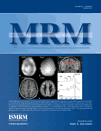Detecting blood–brain barrier disruption within minimal hemorrhage following transcranial focused ultrasound: A correlation study with contrast-enhanced MRI
Abstract
Focused ultrasound combined with an intravascular ultrasound contrast agent can induce transient disruption of the blood–brain barrier, and the blood–brain barrier disruption can be detected by contrast-enhanced MRI. There is, however, no study investigating the ability of various MR methods to detect focused ultrasound–induced blood–brain barrier disruption within minimal hemorrhage. Sonication was applied to 15 rat brains with four different doses of ultrasound contrast agent (0, 10, 30, or 50 μL/kg), and contrast-enhanced T1-weighted spin echo, gradient echo images, and longitudinal relaxation rate mapping along with effective transverse relaxation time–weighted and susceptibility-weighted images were acquired. Volume-of-interest–based and threshold-based analyses were performed to quantify the contrast enhancement, which was then correlated with the ultrasound contrast agent dose and with the amount of Evans blue extravasation. Both effective transverse relaxation time–weighted and susceptibility-weighted images did not detect histology-proved intracranial hemorrhage at 10 μL/kg, but MRI failed to detect mild intracranial hemorrhage at 30 μL/kg. All tested sequences showed detectable contrast enhancement increasing with ultrasound contrast agent dose. In correlating with Evans blue extravasation, the gradient echo sequence was slightly better than the spin echo sequence and was comparable to longitudinal relaxation rate mapping. In conclusion, both gradient echo and spin echo sequences were all reliable in indicating the degree of focused ultrasound–induced blood–brain barrier disruption within minimal hemorrhage. Magn Reson Med, 2011. © 2010 Wiley-Liss, Inc.




